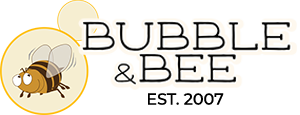Xenoestrogens
Xenoestrogens are synthetic chemicals that enter the body and mimic estrogen. There are many sources of xenoestrogens, from air pollution, plastics, pesticides, personal care products, and water pollution. This article will cover the common estrogenic compounds found in personal care / cosmetic items.
Estrogen receptors are complex molecules within certain cells in our bodies. They have a complex shape that is designed to accept estrogen—just like a lock and key.
Estrogen receptors are designed to accept estrogen molecules. When estrogen locks in to a receptor, certain things happen—particular cells are told to grow and divide, other levels of hormones are signaled to release. It's a very complex process that affects many parts of our body, the heart, our bones, certain glands, as well as our reproductive organs (men too!) Once estrogen has done its job in the receptor, it's released and metabolized (broken down) and leaves the body.
When a xenoestrogen enters the body, it's different. Because these chemicals are similar in shape to estrogen, it locks in to these receptors--but not quite correctly. Because they're shaped differently, the all of the chemical bonds aren't formed correctly. The receptors are stimulated in the wrong ways, creating cells where they shouldn't be. This can lead to reproductive disorders such as:
- Anovulatory Dysfunctional Uterine Bleeding (having a period without ovulating)
- Uterine Fibroids
- Ovarian Cysts
- Polycystic Ovarian Syndrome
- Endometriosis
- Adenomyosis
- Reproductive cancers, uterine, ovarian, breast, etc.
Here is a list of common xenoestrogens.
Parabens
They're listed on labels as methylparaben, propylparaben, butylparaben, etc. Parabens have been studied numerous times and have been found to act estrogenically in cells, and to accumulate in breast cancer tissue. They are used in a wide variety of products as a preservative. For expanded information on parabens, visit this page.
Phthalates
Phthalates are a very harmful group of synthetic chemicals that can mimic estrogen. The problem is that phthalates aren't usually listed in the ingredients list—they're used as fragrance compounds, so whenever you see the listing for “fragrance” you don't really know what it is. There are over 3000 different chemicals used in fragrances, and many of them are phthalates. Also found in plastics--avoid heating foods with plastic wrap (or using it altogether.)
Aluminum
Aluminum is a known metallogestrogen and a toxin in all its forms. (More info here) Aluminum chlorohydrate found in anti-perspirants is what we usually think of, but did you know there's a higher concentration of aluminum in "the crystal" deodorants? They're pure aluminum salts! Other sources of aluminum include vaccines and some antacids.
Other Metals
There are other metals such as chromium, nickle, and lead that will also disrupt hormone balance. For more information, check out our article here.
Triclosan
Triclosan is a compound used in hand sanitizers and anti-bacterial hand soaps. It has become a major problem because so many people are using these anti-bacterial soaps and washing them down the drain. Downstream the waters become polluted with triclosan, which then acts like estrogen in aquatic life—then you have fish and frogs and other animals that die off because they can't reproduce. We think that we need these antibacterial agents, but we don't. It's not about killing the bacteria, but washing it away. Triclosan only kills 99.9% of bacteria--that .1% ends up surviving and getting stronger. We then have more resistant strains of bacteria that lead to higher incidence of staph infections in hospitals, schools, and even homes.
Phenoxyethanol
This preservative is commonly used in place of parabens, but it also exhibits xenoestrogenic activity. (More info here.)
Salicylic acid
Salicylic acid commonly used as an anti-aging or anti-acne treatment, is a suspected xenoestrogen. Also found naturally in willow bark extract and Japanese Honeysuckle Extract. (More info here.)
Grapefruit Seed Extract
Heralded as a "natural" extract, this is a highly processed synthetic preservative and antimicrobial agent, and suspected xenoestrogen. (More info here.)
Quaternary Ammonium Compounds
Also known as "quats" these are chemicals in shampoos and conditioners used to impart "slip" and to coat the hair. Unfortunately many of them have potential xenoestrogenic effects and most of them have very little safety data available. (More info here.)
